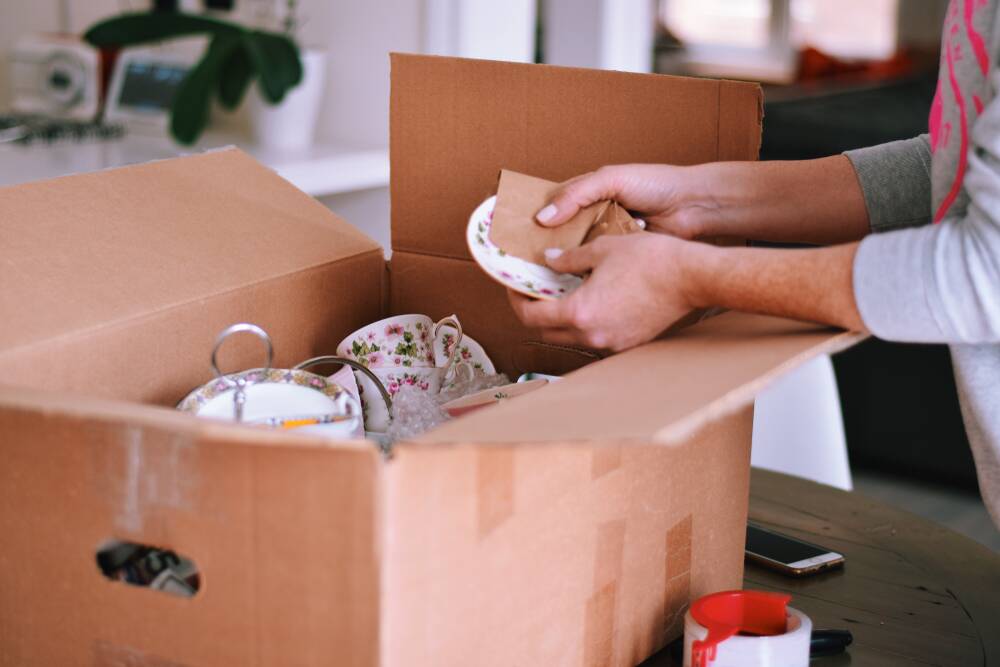How to pack fine china for shipping

This is branded content.
China and other fine porcelain and glassware is often handed down from generation to generation.
So in addition to its basic monetary value (which is sometimes very high), we tend to attach a sentimental importance to it. China is by definition fragile and delicate. Therefore, it's necessary to exercise tremendous care while packing it.
Whether you're packing fine china for long-term storage or shipping via capital transport, the same rules are going to apply.
In this article, we provide step-by-step packaging guidelines which all but guarantee that your china will reach its destination intact.
Choose the correct box
Shipping containers come in many shapes and sizes.
When packing fine china, it's essential that you choose the right box. If you try to use a box that is too big or too small, you run the risk of your china chipping or cracking in transit.
So the first thing you need to do is get your hands on an appropriate box.
Fortunately, there are boxes specifically designed for shipping fragile items like dishes and glass; dish barrel boxes are one example.
If you don't have any, you can order some online and have them delivered express via courier Sydney.
At any rate, the box should be new-not used-and made of sturdy, double-walled cardboard. Its size must correspond with the size of the china being shipped.
As a rule of thumb, there should not be more than a few centimetres between the edges of the item and the inner wall of the box.
The last thing you want is for your china to slide or shift around during transit. It should fit snugly into the box without pushing against the sides.
A buffer of a few centimetres-filled with packing material-is necessary to absorb vibrations from the road.
Wrap each individual item
Each and every piece of china should be individually wrapped using foam sheets, tissue paper, or thick plastic.
You can also use newspaper for this purpose. It's best to wrap each item two or three times before placing them into the shipping box.
Ensure that each piece of china is completely covered by the wrapping material; none of its surface should be exposed.
For added protection, apply a layer of bubble wrap to all of your china and then secure the bubble wrap in place using tape.
Take extra care when wrapping cups with handles, as these are particularly fragile. When it comes to bubble wrap, more is better-always err on the side of too much.
Carefully stack your china
The time has come for you to put your securely wrapped china into shipping boxes, which, to reiterate, must be the right size and shape.
Pack different types of china into different boxes. Do not, for instance, mix plates and cups in the same package.
When packing plates and bowls, stack them into layers inside the box, face-up, one item at a time. Larger, heavier items belong at the bottom.
Cups should not be stacked, and indeed can't be stacked if you have wrapped them adequately. Instead, they should be placed side by side in neat rows and columns. Insert a flat cardboard sheet before placing another layer of cups on top of the previous one.
Insert lots of packing material
This is very important. Even if you've chosen the perfect box, there are going to be pockets of empty space once you've finished packing your china.
These voids are your enemy, as they increase the likelihood of your china moving around in the box during shipping, which in turn increases the likelihood of damage.
All empty space inside your shipping boxes needs to be filled with additional packaging material such as packing peanuts, air cushions, bubble wrap, newspaper, or whatever you happen to have on hand. Leave no stone unturned here.
As we mentioned earlier, these materials serve to dampen the inevitable shocks and vibrations that occur during transit.
After filling all voids, secure the flaps of the box with two or three layers of heavy-duty packing tape. Then send it off with your preferred courier.
Most companies are happy to dispatch a driver to collect the parcels from your home. Note, however, that they will not accept boxes that have not been securely packaged.
Insure your shipment
Regardless of how diligent you are in packing your china, there is always a chance that damage will occur during shipping.
That's why it's a good idea to insure your shipment. Every courier offers postal insurance, the price of which varies according to the value of your goods. With something like fine china, you really shouldn't skip this step.


